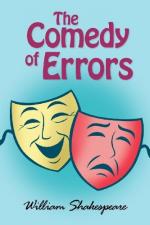|
This section contains 10,079 words (approx. 34 pages at 300 words per page) |

|
SOURCE: Van Elk, Martine. “Urban Misidentification in The Comedy of Errors and the Cony-Catching Pamphlets.” Studies in English Literature 1500-1900 43, no. 2 (2003): 323-46.
In the following essay, Van Elk relates instances of “misidentification” in The Comedy of Errors to the deliberate trickery represented in Elizabethan rogue literature.
In Plautus's Menaechmi, the slave Messenio cautions his master, the traveling twin who has just arrived in Epidamnus, about the dangers that lurk in the city: “among the people of Epidamnus are the most outrageous voluptuaries and drinkers; besides, very many slanderers and flatterers live there; then, the whores of no other races are said to speak with a more flattering tongue.”1 In translating the text for an early modern English audience, William Warner makes Messenio's warning more specific to English interests. His Messenio calls Epidamnus, “a place of outragious expences, exceeding in all ryot and lasciviousnesse: and (I heare) as full...
|
This section contains 10,079 words (approx. 34 pages at 300 words per page) |

|


